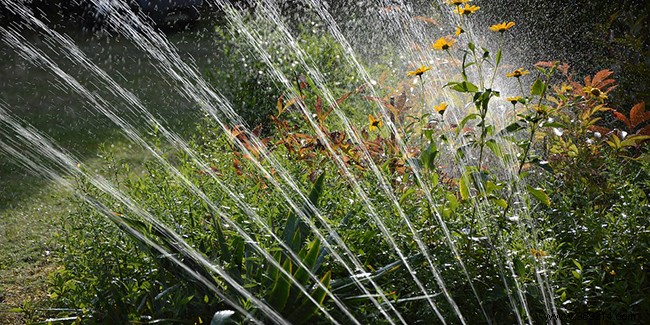
To harvest beautiful vegetables and enjoy a magnificent flower and vegetated garden, it is imperative to water your exteriors carefully. In summer, watering is daily and must be done at the right time with the right watering equipment. To do this, you have the choice between manual, traditional watering, and automatic watering, which is more comfortable. Nevertheless, if each solution has advantages, they are not without disadvantages. Consequently, it is preferable to make your choice according to your way of life, the characteristics of your garden and the nature of your plantations to set up the most appropriate method. Let's take a look at the pros and cons of each method.
Manual watering:what are the advantages? What are the disadvantages?
Manual watering is the classic method practiced for generations. Its principle is simple since, as its name suggests, it requires the hand of the gardener. This one therefore waters his garden by means of various accessories such as the watering can, the garden hose, the spray nozzle or the gun.
If manual watering is the solution to provide care on a case-by-case basis for each plantation and thus better meet the needs of each plant, it should be reserved for small areas and for the vegetable garden, otherwise it would be too much time consuming and exhausting.
What are the advantages of manual watering?
Manual watering has real benefits:
- It allows you to control the water supply for each plant and to individualize it in order to meet the needs of each one.
- More economical to purchase, this solution requires little material and basic, inexpensive tools.
- Hand watering makes it easier to moisten small vegetable gardens.
- There are suitable nozzles to position on the watering can or the watering can hose to be able to water in rain or in full water according to the needs of each plant.
What are the disadvantages of manual watering?
Despite its advantages, manual watering has some disadvantages:
- It requires time since each plant must be irrigated, one after the other.
- To water large areas of land, it is necessary to buy a garden hose of good length in order to avoid incessant back and forth with the watering can.
- Manual watering can quickly become exhausting in a large vegetable patch.
- This solution is not very economical in terms of water.
- If you want to be away for a few days during the summer, it will be necessary to seek the services of a neighbor or relative, or invest in more expensive programmable equipment.
Automatic watering:what are the advantages? What are the disadvantages?
In terms of automatic watering, several solutions are possible. The main method is sprinkler irrigation, which is fully automated, but there are also sprinkler irrigation and underground irrigation, both programmable solutions.
- Sprinkler irrigation has the principle of reproducing the watering offered by the rain, that is to say the closest to the natural. This requires the installation of certain tools, such as the watering turnstile, the watering cannon or the oscillating sprinkler. Whatever the solution chosen, it works by a system of spraying by circular movements within a given radius. It is a preferred solution for large areas of lawn and vegetable gardens.
- Irrigation watering works on the drop-by-drop principle. Micro-perforated or porous pipes are placed on the surface, between the rows of plants in the vegetable garden or they meander among the plants in the beds. It is a precise solution to be reserved for small vegetable gardens.
- Underground watering works on the same principle as irrigation watering, but the pipes are placed underground, at the foot of the plants.
What are the advantages of automatic watering?
Automatic watering is a popular method for its advantages:
- It can be installed on any terrain and be moved as needed thanks to its mobility.
- Irrigation is even and evenly distributed.
- The gardener can choose the watering field by adjusting the radius of intervention of the tool in the context of sprinkler irrigation.
- The gardener does not have to make any effort, the device is automatic.
- With the principle of irrigation, the water is deposited directly at the foot of the plantations, which allows them to be better irrigated in summer and to keep the soil moist.
- The use of a timer is ideal for managing water flow, watering duration, watering frequency and start time.
- Underground watering remains the most discreet and the most aesthetic. It helps keep the soil moist, which is ideal in hot weather.
- When you are away, there is no need to seek the services of a neighbor or loved one. Automatic irrigation maintains your garden for you through scheduling.
What are the disadvantages of automatic watering?
If it is interesting, automatic watering has some negative points:
- This type of watering is essentially global and not targeted. It does not meet the specific needs of each plant.
- The water diffused by the sprinkling forms droplets which mainly water the leaves and not the foot. In times of drought, this watering is not enough to supply the plants with water. In addition, wet leaves are at risk of disease development.
- The water diffused by sprinkling is sometimes too violent for certain flowers and for fragile young plants.
- The irrigation watering system has its limits. If it is practical, it is long to install, and unattractive insofar as the pipes are visible. In addition, the holes regularly clog due to limescale.
- Be careful when digging in your garden! You run the risk of drilling into a buried pipe at any time.
